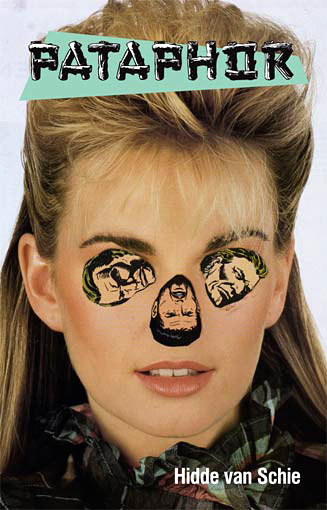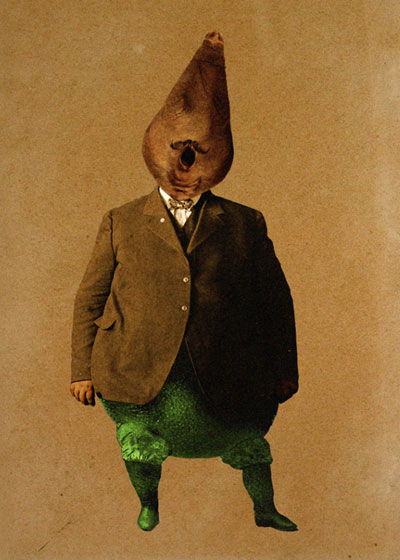From Meta to Pata
by an Anonymous Party @ the College Of Pataphysics Under Brooklyn Underground (website)
meta.
The etymology of meta, from the Greek μετά, meant ‘beyond, after’. It signified an abstraction ‘beyond’ the subject itself, or that which came ‘after’ something else, the latter the same as how the prefix ‘post-‘ functions in contemporary conversation. Metaphysics, for Aristotle’s pupils, had the tandem meaning of ‘that which is beyond the physical’ & ‘the book written after the book called Physics’.
The etymology of meta, from the Greek μετά, meant ‘beyond, after’.
In colloquial English, over two millennia, meta has evolved to mean ‘beyond, about’. In its current connotation meta is ambiently understood as meaning ‘a thing which studies itself’. An X about X. At a once remove, the meta- prefix creates an inversion of any word onto itself. Metafiction can be viewed as any moment in a fiction revealing any facet of the act of fiction; metaphilosophy comprises various philosophies about philosophy itself; metaethics would be any proposed ethics about a discussion of ethics; a metajoke is any ironic joke mocking the act of jokes themselves.
These are not metaphors, so much a metaforms. The suffix -phor meant ‘to carry’, suggesting a metaphor ‘carries’ two things in comparison. Note that to say “A metaphor ‘carries’ something” is a metaphor itself. A metaphor is a nonliteral comparison of two things. X is Y or X of Y. Time is money. Life is a journey. Rollercoaster of emotion. Blanket of snow. Heart of gold. We are one. Most clichés become metaphors even though most metaphors attempt to resist cliché. All X are Y but not all Y are X is a useful cliché, but is it always true?
A similie is a yet more honest type of metaphor. X as Y or X like Y. Cute as a button. Poor as dirt. Pure as snow. Shake like a leaf. Grow like a weed. Like flies on shit. Like lovers do. Like nothing on Earth. It is crystal clear that a metaphor & a similie are a similar type of speech act, with only certain words (is/of & as\like) which keep the act of expressing verbal comparison in two formal categories. A similie is merely a particular type of metaphor. Meta contains more gravity.
A metaphor is essentially a lie. These two things are not each other, but are exaggerated to be so, to infer their similarity, to suggest their complimentary natures. A similie is however closer to a truth in that it says outright two things are ‘like’ each other but are separate. Meta carries the added weight of the thing-in-itself.
The metaform, to be curt, ‘the thing that studies itself’ can be found in precise permutations, portions of composition, fragments in fiction admitting artifice, moments during cinema that reveal all that is behind the ominous fourth wall. The writer writing about the act of writing. The portion of a painting which contains another canvass being painted. The television audience watching television. The film about a filmmaker making a film. The music lyrics referencing their own genre: “I’ve got the blues” due to this reflexivity being so readily found & increasingly utilized ad nauseum as the prior century progressed inwardly toward the deadend labyrinth of excavating ones medium.
Précis redundant summary: A simile infers for us; a metaphor allows us to infer. Both provide a way of understanding an abstract by congruity. Whereas the metaform is all ways which a media can carry the presentation of aspects of its medium. Beyond these even, pataforms propose an odd way of understanding an abstract by way of incongruity, with methods of expression that have the potential to transcend ‘medium’ itself. Rather than play within, it blooms from out, eclipsing its roots.
pata.
The etymology of pata, a French pun made of a contraction of the Greek ἔπι μετὰ (‘epi meta’), translates malleably as either: ‘that which is beyond the beyond’, a meta of a meta; but also ‘that which is altered after what is already meta’, or ‘post-meta’.
Cockney rhyming slang is a type of pataform. The phrase ‘apples & pears’ rhymes with ‘stairs’, therefore in Cockney ‘going up the apples’ is said instead of ‘going upstairs’. Here we see an essential aspect of the pataform, the twice-remove, obscuring its own origin. The connective factor, ‘pears’, is absent from the final result:
Going upstairs → Stairs rhymes with pears → Pears & apples are fruit → Going up the apples
In literature, a classic example of pataform run amok is Finnegans Wake, wherein each word contains deferents to other words, often in other languages, so that each sentence is in sets of a series of puns, the mixing of which evokes a unique imagery & occasional phonetic satisfaction, if only one is patient enough to sit & unpack them. This mental exercise, however, one would wish upon no one, willing or otherwise. For example: “Quiont a quincidence!” In addition to being a homophone for ‘quite a coincidence’, ‘quoin’ is a word for ‘wedge’, & ‘quin-‘ meaning 5, making one potential interpretation being: “Quite a wedge of five coincidences!”
These are pataphors, because they are linguistic. Just as similie is a particular type of metaphor, -phor is a particular type of -form. The suffix -form is used due to the meta & pata prefixes being applicable to all artistic mediums.
In visual art, pataforms can be identified throughout art history, from DaVinci’s Flying Machines to the Dadaists manipulation of everyday objects, as well as in millennial internet art, (be it l33t speak altering language through typos (elite → leet → l33t), or the image-macro “meme” representing the absolute democratization of the arts: any appropriated photograph, altered by cutting out the shape of the subject, placing it on a single color or another photo-background, then superimposing text over it), in both we see the manipulation of the preexisting & the creation of combinations yet unseen.
In sonic art, pataform can be heard in all music which goes beyond a remix by obscuring its origin. Taking samples of preexisting music & tweaking it until it is unrecognizable, then composing with those fragments, is a now ubiquitous example of pataform in music. One electronic music duo admitted making ‘microsamples’ of credibly famous, incredibly expensive copywritten songs, but by only sampling a single horn sound or one drum kick, then composing out of it, no one could ever tell it came from a very well-know song & the duo never paid royalties. On another end of the spectrum, likewise linguistic but primarily technological & aural, a music project called The Books made a song called ‘Free Translator’ where lyrics were typed into an online translator, slurried back & forth through numerable languages then back to English, finally singing the gibberish lyrics the free translator ended up with. The results nothing short of dreamily vivid, ungraspable gorgeousness. This is an exemplar of a more aleatoric method of altering a thing until its origin is unrecognizable.
Repeat: While meta is a thing looking in on itself, pata are ways for things to move beyond selves.
Replete: If meta is a raindrop that falls into a child’s blown bubble, then pata is the coitus of chemicals before the cloud it came from & all the times the child misremembers that moment’s awe.
data.
Einstein, once paraphrased, quipped: “The secret to creativity is knowing how to hide your sources”.
Exemplars of meta & pata can be found everywhere in human expression. Impossible to exhaust, it is important to premember that all that is pata is built upon a past it obliterates.
Pata is about the building of possibilities. At a twice-remove from its origin, the process of pata symbolizes all you can imagine & all the ways you can alter what already exists. Pata is the ‘what if’ & the ‘could be’ of all thought. Ago, ergo sum mutata.
I act, therefor I am change. And as a final moment in your reading experience (←meta) a humble anonymous anyone who reign this moment under your eyes but who deign to feign anything at all will now provide you with a final paragon of the pataphor, conceived during a visitation (←pata→) from the good people of Myco & their lineage, all trans & phi.
If :
Water is Music
Then:
Drink Music
##



